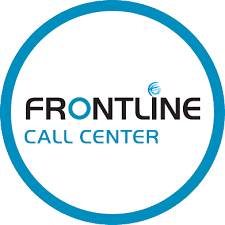Ask These Questions Before Pursuing An M&A Transaction
For life sciences companies, M&A and collaborations are a key strategy for growth, building product pipelines and getting products to market as quickly as possible. According to BDO’s Life Sciences CFO Survey, 33% of CFOs planned to pursue M&A in 2022, up 25% from the 2021 survey. With valuations coming down from record highs and uncertainty around future market trends, it’s important that life sciences organizations begin to carefully prepare for a transaction well in advance, whether they’re on the buy- or sell-side.
To help you determine if now is the right time for M&A, we’ve provided a list of questions related to strategy, due diligence, integration and operations for both buy- and sell-side life sciences transactions. While this is not a comprehensive list of all considerations for pursuing M&A, these questions can be used to help build a strong foundation for any pursued deal.
For life sciences companies looking to ACQUIRE a company:
Strategy
- What synergistic opportunities does this acquisition present?
- What are you looking to achieve from the transaction? Have you clearly defined what success looks like and how you will measure it?
- Does your strategy for the transaction align with your overall corporate strategy?
- How much risk are you willing to take on?
- Have you been realistic about your ability to do the transaction in terms of access to funding or availability of resources?
Due Diligence
- What is the reputation of the company you’d like to acquire?
- Have you completed diligence related to:
- Synergies – Deal value drivers
- Product – Plans for commercialization, scaling production
- People – Compensation strategy, culture
- Technology – IT systems, 3rd-party solutions
- Finances – Quality of Earnings (QOE) analyses, forecasted profitability, working capital, capital expenditures, strategic initiatives
- Operations – SG&A, supply chain
- Regulatory Compliance
- Go to Market Strategy
- Was enough information provided in order to properly complete due diligence?
- Are there any outstanding issues with the company that need to be addressed?
Integration
- Have you defined the integration goals and priorities? Are they aligned with your transaction rationale and deal value drivers?
- Have you defined the target operating model for the combined company (e.g., degree of integration)? Are you prepared to provide your integration teams a roadmap to facilitate integration planning?
- Have you defined an integration management structure to support the integration and synergy capture planning and execution process?
- Do you have a good understanding of the concerns that your stakeholders (e.g., employees, customers, partners, etc.) may have about the transaction? Have you developed a communications and retention strategy to address your stakeholder concerns?
- What will it take to integrate the acquisition into your company’s culture? Are the cultures aligned, and are they a good fit?
- How will employee roles and responsibilities change with the deal? Have you taken steps to ensure the right people will be in the right roles?
- Are your technology systems compatible? What support will be needed to integrate the technology systems, and what is the timeline for doing so?
- What cyber and data privacy risks will come with the integration process? Do you have a plan to address and mitigate them?
For life sciences companies looking to SELL a company:
Strategy
- What are you looking to achieve from the transaction?
- Have you clearly defined what success looks like and how you will measure it?
- Have you considered other exit strategies before deciding on selling?
- Do you have a clear sense of your company’s value?
- Would you prefer a strategic or PE buyer? Is the potential buyer the right fit?
- What is the expected impact on investors, employees and resources?
- How will the transaction impact the company’s reputation?
- When and how will the deal be announced?
Due Diligence
- Is your organization prepared to go through a robust due diligence process that encompasses legal, financial, operational and compliance concerns?
- Who can management tap to support the due diligence process?
- How resilient are processes and systems throughout your organization? Is any infrastructure single-person-dependent?
- Have you completed a sell-side QOE report?
- Have you had an independent party do diligence on your company? Have you proactively addressed areas of risk they identified?
Operations
- Has the transaction perimeter or “what’s in and what’s out” been defined? Which executives, key employees, customers and assets will be part of the transaction?
- Do you have any operational imperatives for the buyer (e.g., do you want a soft landing for your employees, how will you maximize customer retention during the transaction, what is the buyer’s corporate culture, etc.)?
- Are there any strategic, revenue enhancing or cost reduction initiatives that have been identified or are already in-process that could increase the company’s valuation at exit? What is the status of those initiatives? Should you continue in-process initiatives?
- If you are divesting a business that will need to be carved out, how entangled is the business with the rest of your operations? Have you developed carve-out financials and defined the standalone costs for the business? Have you determined what transition services you are willing to provide the buyer? What will it take to operationally carve-out the business by transaction close?



